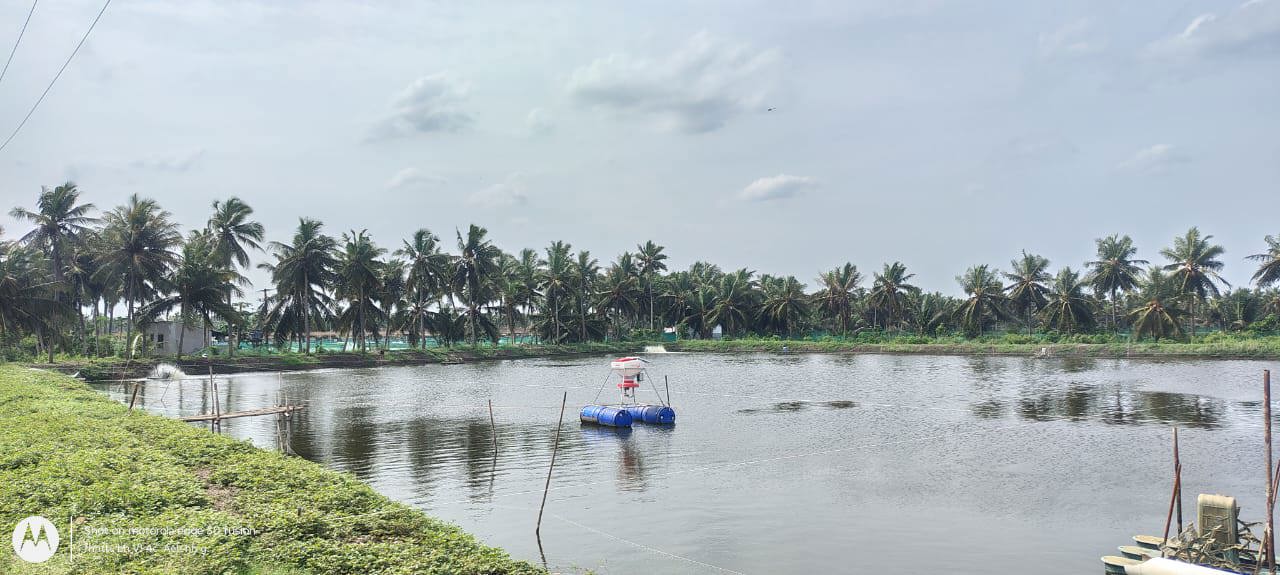Ramachandran Elamparithy, Technical Head (Aqua), Skretting India
Monsoons challenge shrimp farmers with unpredictable conditions that demand timely and proactive farm management. From strengthening pond bunds and improving drainage systems to optimizing water parameters and adjusting feeding strategies, each step plays a crucial role in building a resilient and effective monsoon management plan.
Monsoon Management in Shrimp Farming: A Comprehensive Guide for Indian Farmers

Understanding India’s Monsoon Patterns:
In India there are two different monsoon seasons affecting various part of the country.
- Southwest monsoon (June-September) begins over the Arabian sea near Lakshadweep and moves towards Kerala and other northern states of India. It brings rainfall to most parts of India except in some parts of Tamil Nadu and southern Andhra Pradesh.
- Northeast monsoon (October-December) brings most of the rainfall to Tamil Nadu and southern Andhra Pradesh, mainly due to cold northeastern winds and cyclones in the Bay of Bengal.
Timely tracking of monsoon forecasts through news channels or other media is essential for shrimp farmers to take necessary precautionary measures. Based on the seasonal patterns, farmers should plan and prepare their shrimp crops carefully to minimize the risk of contamination and disease. The monsoon impacts the pond environment physically, chemically, and biologically affecting the soil, water quality, and the health of shrimp and fish.
Precautionary Measures for Shrimp Farming During Monsoon:
Strengthening of pond bunds/Dykes:
Before the onset of monsoon, the pond bunds should be strengthened, especially in loose soil and low-lying areas. Addition of sandbags in the weaker portion of the dykes and the peripheral bunds bordering canals, river systems or sea areas should be done to strengthen the bunds so that the bunds are not washed away in rain or overflowing water or floods.
Pond preparation:
- If stocking is planned during the monsoon, wet pond preparation method is recommended. Flushing the pond bottom with water through powerful hoses and dragging the pond bottom manually with wooden planks to remove bottom sediments.
- Apply agriculture lime (calcium carbonate) at 2000 kg/ha to pond bottom before pond filling. In case the pond was in earlier crop affected with EHP then application of calcium oxide at 4000-6000 kg/ha to increase pH of soil and kill the EHP carriers is essential.
Reservoir and water treatment:
- The pond shall be filled with water after completion of drying, manuring, liming of pond bottom. If using creek or seawater, then it shall be treated with 60% active chlorine (bleaching powder) at 300 kg/ha or if 30% active chlorine at 600 kg/ha. In case of bore water apply 10 ppm chlorine.
- The chlorine in any form shall be applied after 72 hours of water filling to allow any spores to germinate and larvae shall be killed in the water after treatment. After chlorination, water should be left for dichlorination for 72 hours.
- In shrimp farming 20 to 30% of the area or ponds shall be allocated as reservoir to maintain good supply of treated water.
Strengthen biosecurity:
The biosecurity of the farm mainly crab fencing, bird fencing and killing of any crabs inside the pond dikes or bottom are necessary to prevent horizontal transmission of diseases.
Water quality maintenance:·
- The rainwater is acidic and less dense in nature, which makes it float in the top layers of water column of pond water which is normally saline and dense. Hence top water draining, continuous running of aerators to mix the water along with oxygen and application of lime 40-60 kg/ha helps to maintain temperature, salinity, oxygen and pH of the pond water during raining periods.
- Application of AquaCare Mineral Balance which provides complete mineral solution to shrimp, after soaking at 10 to 15 kg/acre during the rainy period. It provides good osmoregulation to shrimp in these fluctuating periods of salinity.
- Temperature tends to become low on continuous cloudy, rainy days, hence operate aerators to manage temperature.
- Increase in suspended solids due to erosion of soil particles along with aeration will cause plankton crashes and water becomes turbid in rainy situations. Hence the application of lime, magnesium, and potassium are essential for pond water.
Regulation of water depth:
The water level may increase during incessant rains and there is always a chance of an overflow of pond water in some low-lying areas. If such potential danger is there then the surface water shall be periodically removed through drainpipes on the top portion of the bund but many shrimp ponds do not have a bottom and top outlet nowadays, putting their culture at risk.
Feed Management:
Low temperature situation results in low metabolic rate in shrimps causing low digestion rate taking more time for digestion. Hence reduce feeding during rainy days. Mixing probiotics like Santron in feed helps to improve feeding.
Improving shrimp immunity:
- Providing Relaxx at 4 g/kg feed to improve immunity should be done to prevent outbreak of diseases. Probiotic applications in water can be made on sunny days only as it will demand more oxygen for bacteria, ultimately decreasing DO levels in ponds.
- Daily observation of shrimp for health conditions via check tray observation is essential. Prevent usage of chemicals in pond water during rainy and cloudy days as it would cause further crash of plankton and DO problems.
Disease outbreak situation:
If there are any severe outbreaks of diseases like white spot virus then it’s always better to harvest the shrimp otherwise mass mortality may occur during rainy season. In the case of Monodon farms during rainy season black or brown gill problems of choked gills will occur due to fungus and hence proper maintenance of pond bottom is essential.
Summary:
While monsoons are unavoidable, their effect on shrimp farming can be greatly lessened with proper planning and timely actions. By strengthening infrastructure, maintaining water quality, adjusting management practices, and focusing on animal health, Indian shrimp farmers can successfully handle the challenges of the monsoon and achieve stable, productive farming results.